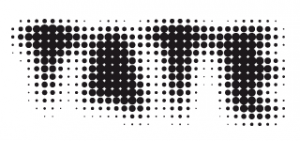If you suspect you are the victim of surveillance, what counter surveillance methods exist to help to detect it, prove its existence if necessary, and ultimately protect yourself and your privacy against it?
Covert surveillance
As counterintuitive as it may first appear, one of the best ways of detecting, proving and protecting yourself against surveillance is to use your own form of covert surveillance. For example, as an individual, the use of a CCTV camera outside your property or video doorbell system can help you to identify any unusual activity at your property when you’re not at home or capture images of anyone conducting illegal activity.
Technical Surveillance Countermeasures (TSCM)
TSCM surveys, or bug sweeps, involve the systematic search for illicit bugs or eavesdropping devices. Some detection equipment is readily available from online retailers or can be built using other accessible components. However, sophisticated devices may only be detectable by professional-grade equipment due to the frequency or range of frequencies they use or the devices may use techniques to avoid being detected such as remote activation and inactivation.
As well as surveys which can provide assurance at one point in time, continuous monitoring and detection systems are also available. Similarly, live monitoring can be provided for sensitive occasions such as press briefings, board meetings or AGMs. In instances where surveillance techniques such as the use of a mobile phone to record information are prohibited, mobile phone blockers and detectors are available.
Cyber TSCM & Software Countermeasures
With the growing threat posed by cyber-attacks, the protection of data held online and on secure networks is paramount. For those responsible for IT systems, cybersecurity methods such as access control, firewalls and general employee education on issues such as password best practice are essential. Alongside this though, there does remain the risk of an adversary using surveillance techniques such as installing keyloggers, intercepting Bluetooth and mimicking WiFi points to lure unsuspecting users. TSCM techniques including visual, physical and digital searches can be used to detect illicit cyber activity.
Human Countermeasures & Counterintelligence
Many surveillance techniques use human methods rather than electronic. To counter these, techniques such as simply being situation-aware and avoiding certain locations can be sufficient to counter the threat of surveillance.
On a national level, counterintelligence operations exist to monitor and protect against surveillance by other nationalities or criminal groups such as terrorists.
Structural Countermeasures
In order to protect an organisation against the threat of physical interception and access, social engineering techniques such as Physical Penetration Testing can be used to examine how readily access can be gained into a building by a non-authorised individual and then to address any weaknesses in the physical security protocols.
Another technique is to focus on the integrity of one secure space in which confidential conversations and information can be undertaken in confidence. As well as measures such as an absence of windows, electromagnetic shielding and strict access control can be implemented for an existing room such as a boardroom, a secure room or faraday cage could be installed to provide assurance of electromagnetic interference protection.
Do you need assistance in countering a surveillance or eavesdropping threat, or do you think you’re the victim of an attack? Contact Us today for advice and a no-obligation discussion.







